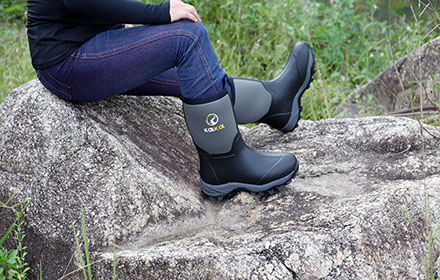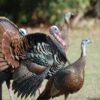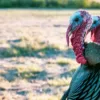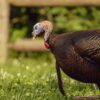There is a question that generally arises among people when it comes to choosing the right footwear for work: can hiking boots be used as work boots? Or are work boots good for hiking?
Even though hiking boots and work boots look similar at first glance, there are many points of difference between them that cater to the needs and activities of different people.
In this blog, we will examine the contrasting features of hiking boots and work boots, as well as explore whether hiking boots can indeed be used as work boots.
What’re the Differences Between Hiking Boots and Work Boots?
Hiking Boots
Hiking boots are footwear specifically designed to carry you through outdoor adventures such as hiking, trekking, backpacking and climbing. They are typically made from a combination of leather, rubber and other materials that are engineered to provide comfort, support, and protection in unpredictable environments.
Here are some key characteristics of hiking boots.
Tractionf
Hiking boots excel in providing excellent traction and grip on various terrains, including muddy trails, slippery rocks, and steep slopes. The outsoles of hiking boots are designed with deep lugs or treads, which offer better stability and prevent slipping or falling when hiking.
This feature is crucial for hikers who encounter unpredictable conditions and need reliable traction to stay in balance while traversing challenging landscapes.
Lightweight
Hiking boots are typically constructed using lightweight materials to minimize fatigue that hikers may experience during long hikes. They offer flexibility and agility, allowing for natural foot movement while traversing different types of terrain.
Breathability
Hiking boots often incorporate breathable materials such as mesh panels or waterproof membranes to regulate temperature and prevent moisture accumulation. This feature ensures that your feet will stay cool and dry even in hot and humid conditions, thereby reducing the risk of blisters and discomfort on your feet.
Ankle Support
Hiking boots are typically designed with higher ankle collars that provide a greater level of ankle support and stability, thereby preventing ankle injuries. This feature is particularly beneficial when navigating rocky surfaces or traversing rugged terrains.
Work Boots
Work boots, on the other hand, are designed for individuals who require footwear that can withstand demanding work environments, such as construction, manufacturing, and agriculture. These boots prioritize durability, safety, and protection.
Here are some key features of work boots.
Safety
Most work boots are equipped with protective features like steel toes or composite toe caps to safeguard your feet from a variety of hazards, such as heavy objects, impacts, and compression. They are often manufactured with puncture-resistant soles to protect them from sharp objects.
Work boots are often subjected to different hazards, such as heavy machinery, falling objects, and potential electrical risks. Therefore, if you are planning on using hiking boots for work, you need to ensure that your hiking boots meet the required safety standards for your specific work environment.
Slip Resistance
Designed to provide excellent traction on slippery surfaces, work boots contribute to reducing the possibility of accidents in industrial environments. Work boots have specific slip-resistant outsoles that provide a good grip and stability even on slippery surfaces such as oil, water, or chemicals.
Depending on your work environment, it is essential to consider the level of traction and slip resistance required to ensure your safety.
Durability
Work boots are constructed with heavy-duty materials such as leather or synthetic compounds that can withstand harsh conditions and rough environments, ensuring longevity and reliable performance for years to come.
Support and comfort
Work boots are often designed to incorporate features such as shanks and stability plates that are intended to improve stability and decrease the risk of ankle sprains.
Moreover, work boots are equipped with additional padding, arch support, and cushioning to provide all-day comfort during long hours of standing or walking, thereby optimizing productivity in demanding work environments.
When considering hiking boots for work, be sure to determine if the hiking boots you choose provide adequate support and comfort required for your specific work activities.
Insulation
Depending on the work environment, work boots may provide insulation that prevents the worker from being harmed by extremes of temperature or electrical hazards. The feature ensures that your feet remain warm and safe even when they are being exposed to various weather conditions.
Conclusion
There are many similarities between hiking boots and work boots when it comes to durability, support, and traction. However, before using hiking boots for work, it is important to evaluate your specific work environment and requirements to see if they are appropriate.
When you know the differences between the two types of boots, you are able to match the right pair of footwear with your specific requirements.
Consider factors such as durability, protection, support, traction, waterproofing, and breathability to ensure that your footwear meets the necessary safety standards and provides the comfort and functionality you need to perform your job.
The safety of your feet is always a priority, so if you are unsure about whether your hiking boots are suitable for work, please consult with a professional.




















Leave a reply